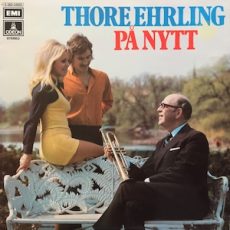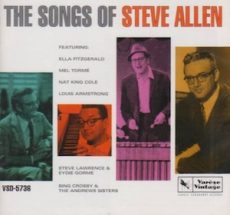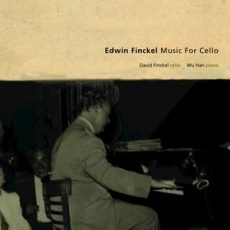
Daily Dose Of Jazz…
Thore Ehrling was born December 29, 1912 in Stockholm, Sweden and played with the Frank Vernon Ensemble from 1930 to 1934. At the same time he studied at the Royal Swedish Academy of Music.
From 1935 to 1938 he played under Håkan von Eichwald and did arrangement and composition work on the side. He started his own ensemble in 1938, which grew into a big band in the nineteen years it was active. This group played popular music and jazz, recorded frequently, and played often on Swedish radio.
The group featured many sidemen who went on to become prominent on the Swedish jazz scene, such as Uffe Baadh and Carl-Henrik Norin, and accompanied popular Swedish singers such as Inger Berggren and Lily Berglund.
Trumpeter, composer and bandleader Thore Ehrling, who led jazz and popular music ensembles, died in Stockholm, Sweden on October 21, 1994.
More Posts: bandleader,composer,history,instrumental,jazz,music,trumpet

Daily Dose Of Jazz…
Morris “Moe” Koffman was born on December 28, 1928 in Toronto, Canada. At the age of nine he began his musical studies in his native city, studying violin. He attended the Toronto Conservatory of Music, where he was a student of Samuel Dolin.
Dropping out of school when he found work performing in dance bands, in 1950, he moved to the United States, where he played with big bands including those of Sonny Dunham and Jimmy Dorsey. In 1955, he returned to Toronto where he formed a quartet and later a quintet and recorded Swinging Shepherd Blues in 1957 which helped establish his reputation as a flautist.
Koffman was inspired by Rahsaan Roland Kirk to play multiple instruments at once. He had a modified set of straps to hold a tenor and alto saxophones so that he could put forward incredible chords and improvise at the same time. He performed with Dizzy Gillespie and Peter Appleyard during the 1980s, as well as continuing to front the Moe Koffman Quintet. He often performed with Rob McConnell’s Boss Brass.
He was appointed to the Order of Canada in 1993 and inducted into the Canadian Music Hall of Fame in 1997.
Saxophonist, flautist, composer and arranger Moe Koffman, who was diagnosed with non-Hodgkin’s lymphoma in 2000, died of cancer in Orangeville, Ontario, Canada on March 28, 2001 at the age of 72.
More Posts: arranger,composer,flute,history,instrumental,jazz,music,saxophone

Daily Dose Of Jazz…
Stephen Valentine Patrick William Allen was born in New York City, on December 26, 1921. As an only child and with his father dying when he was raised on the South Side of Chicago, Illinois largely by his mother’s Irish Catholic family. Running away from home at 16 he easily took to begging. A short stint in the Army was derailed by asthma and he was discharged.
He was a pianist and a prolific composer. By his own estimate, he wrote more than 8,500 songs, some of which were recorded by numerous leading singers. Allen won the 1964 Grammy Award for Best Original Jazz Composition for “Gravy Waltz, for which he wrote the lyrics. His songs have been performed and/or recorded by Count Basie, Tony Bennett, Bobby Darin, Ella Fitzgerald, Mark Murphy, Judy Garland, Aretha Franklin, Lionel Hampton, Claire Martin, Oscar Peterson, the McGuire Sisters and Ray Brown among otheres.
He also wrote more than 50 books, including novels, children’s books, and books of opinions, including his final book, Vulgarians at the Gate: Trash TV and Raunch Radio published in 2001.
Pianist, composer, writer, actor, comedian, television and radio personality Steve Allen, who in 1954 co-created and was the first host of The Tonight Show, died due to a ruptured blood vessel on October 30, 2000 in Los Angeles, California. He was 78.
More Posts: composer,history,instrumental,jazz,music,piano,writer

Daily Dose Of Jazz…
Herbert Anthony Charles Spanier was born in Cupar, Canada on December 25, 1928. He played guitar and harmonica at five, bugle in Regina, Canada cadet bands, and trumpet in high school. One of the first beboppers in Canada, and a figure of some legend on the Canadian jazz scene,
He played with Paul Perry and with his own band ‘Boptet’ in Regina before working in Chicago, Illinois from 1949-1950 and from 1950-1954 in Toronto, Canada. He was a sideman to Paul Bley in New York 1954-1955 and Los Angeles, California 1958-1959, and toured out of New York with the Claude Thornhill and Hal McIntyre orchestras in 1955.
He was an influential jazz musician in Montreal, Canada from 1956-1958 and between 1960-1971. Spanier taught briefly at Sir George Williams University, performed in various dance, hotel, and CBC orchestras, contributed music to NFB films. Herbie was the leader on the CBC’s ‘Jazz en Liberté’ and in various clubs. Returning to Toronto in 1971, he was a featured soloist for nine years with Nimmons ‘N’ Nine Plus Six.
For the next two and a half decades he led his own groups, won the Juno Awards, received a Special Recognition Award and recorded sessions in 1993-1994 in which he produced new works which combined with earlier recordings on compact discs.
Trumpeter, flugelhornist, pianist, and composer Herbie Spanier died in Toronto, Canada on December 13, 2001.
More Posts: bandleader,composer,flugelhorn,history,instrumental,jazz,music,piano,trumpet

Daily Dose Of Jazz…
Edwin A. Finckel was born on December 23, 1917 in Washington, D.C. to musical parents and was the youngest of six children. Left to his own devices his artistic talents won him a scholarship at the Corcoran School of Art. Finding access to a piano within a year he had taught himself to play, albeit without the ability to read music. He took to jazz although he also showed skill as a tennis player while still a teenager.
Well regarded for his ability to improvise music he went on to arrange others and later composed over 200 of his own melodies. He appeared professionally as a teenager and he went on to introduce string instruments into his arrangement for big bands. His best known song may be Where Is The One, which was recorded by Frank Sinatra..
In the Forties he wrote songs for film, was chosen as a representative of a musical, then went into teaching in the music department at Far Brook School in New Jersey for 39 years. There he gave private lessons, conducted the choir and orchestra, and wrote much of the music that the children sing. He continued to perform jazz and in his forties he also wrote classical music.
Pianist, composer and arranger Edwin Finckel, who ran a summer camp with his wife for 17 years while performing jazz and composing classical music, died on 7 May 7, 2001 at 83 in Madison, Wisconsin.
More Posts: arranger,composer,educator,history,instrumental,jazz,music,piano


